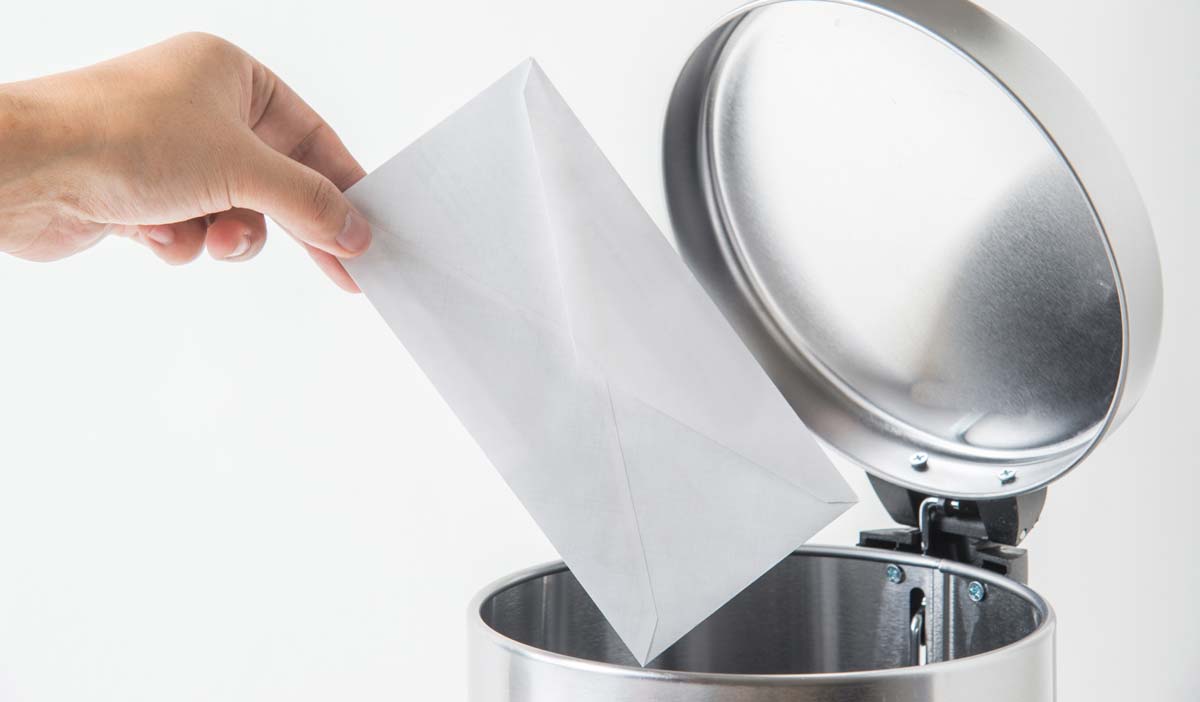This is the sort of letter that no one wants to receive: one containing the words “cease and desist”. Whether it arrives by post, email or someone showing up at your door with a personal delivery, a cease and desist letter almost always means some degree of trouble and expense.
A cease and desist letter regarding intellectual property rights is often sent as a warning. The letter informs the recipient that they have allegedly infringed the sender’s intellectual property rights, and asks them to stop their actions immediately. The letter warns the recipient of potential legal action if they don’t comply.
These letters are commonly used for trademark disputes, where the sender claims legal rights to a trademarked word, phrase or design. For example, a cease and desist letter may demand that the recipient stop using the sender’s trademark on commercial merchandise. Cease and desist letters can also be used for any type of intellectual property right dispute, including patent, copyright or industrial design infringement.
If you’ve received a cease and desist letter, follow these four steps:
- Don’t panic
- Don’t forget the deadline to respond
- Don’t ignore the letter
- Do obtain expert legal advice
1. Don’t panic
A cease and desist letter demands that the recipient stop doing a specified activity, and not restart it in the future. For example, a trademark owner may send a cease and desist letter that demands that the recipient stop using their trademark, or a confusingly similar trademark or trade name.
But don’t panic – your receiving a cease and desist letter does not mean that the sender is taking you to court. The sender may threaten legal action if you don’t comply with their demands, but it does not always mean that they will start legal proceedings. Most cases are settled without formal legal proceedings or before the legal proceedings go to trial.
2. Don’t forget the deadline to respond
A cease and desist letter will almost always include a deadline to respond. Often, this deadline has been set by the sender and is flexible. If you acknowledge the letter before the deadline and ask for more time, the sender will usually agree to wait a little bit longer for your complete response.
Failing to respond by the deadline may cause the sender to think that you’re ignoring the letter.
3. Don’t ignore the letter
You may want to ignore a cease and desist letter, and hope that the issue will disappear on its own. However, ignoring the letter will likely lead to bigger problems.
First, you will likely hear from the sender again, potentially with formal legal proceedings. The deadlines for formal legal proceedings will be set by the court’s rules and regulations, and certain legal expenses will be incurred just to maintain your position. If you try to resolve the issue before formal legal proceedings begin, you will likely have more flexibility and a better chance to control your costs.
Second, if you do end up before a judge, it is better to show that you responded to the complaint promptly and reasonably, instead of having to admit that you simply ignored the complaint.
4. Do obtain expert legal advice
Whether the cease and desist letter comes from a law firm or directly from the complainant, do not assume that the sender’s assessment of your legal position is correct. They may have incorrectly interpreted the facts or the law. You may also have prior rights or a stronger position than the complainant. The law may be unobvious or unclear, so it is important to turn to the experts.
For trademark cases, there may be other options for dealing with a valid complaint beyond simply stopping your activities as the letter demands. Purchasing the complainant’s trademark rights, selling your own trademark rights, or entering into a coexistence or licensing agreement with the complainant, are examples of possible solutions. An expert can help ensure that you are aware of your full range of options before you decide how to respond.
For more information on how to manage a cease and desist letter, contact a member of our Trademarks and Brand Protection team.
The preceding is intended as a timely update on Canadian intellectual property and technology law. The content is informational only and does not constitute legal or professional advice. To obtain such advice, please communicate with our offices directly.
Related Publications & Articles
-
When patents expire but royalty payments don’t: contrasting U.S. and Canadian approaches to patent licensing
How does the expiration of the patents in one jurisdiction impact global royalty payments? This question was addressed by the United States Court of Appeal’s Ninth Circuit in C.R. Bard Inc v Atrium Me...Read More -
Accelerating Canadian Plant Breeders’ Rights (PBR) applications with foreign Distinctness, Uniformity and Stability (DUS) test results
In Canada, Plant Breeders’ Rights provide breeders exclusive rights for up to 25 years for tree and vine varieties and 20 years for all other plant varieties, ensuring breeders can benefit from their ...Read More -
Canadian Intellectual Property Office “Next Generation Patents” update and status as of April 10, 2025
On July 17, 2024, CIPO launched a new electronic system and portal, MyCIPO Patents, as part of its Next Generation Patents initiative. The launch has been fraught with difficulties, creating delays, e...Read More




